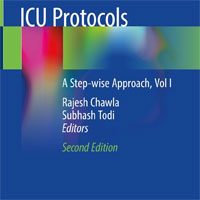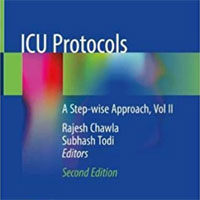Tag: hypoxemia
Cognitive impairment in chronic obstructive pulmonary disease: disease burden, determinants and possible future interventions
Cognitive impairment (CI) is an important but an under-recognized extra-pulmonary feature of chronic obstructive pulmonary disease (COPD). It is related to the burden of disability, worse health outcomes and impaired self-management.... read more
Is Tranexamic Acid Going to CRASH the Management of TBI?
In the recent CRASH-3 randomized trial, early administration of tranexamic acid (TXA) was associated with a non-significant reduction of head injury-related 28-day mortality in patients with isolated traumatic brain injury... read more
Hyperoxia in the Critically Ill
Critically ill patients come to the ED all the time and it is almost reflexive to liberally administer oxygen in these acutely ill patients. Many providers may consider supplemental oxygen a harmless and potentially beneficial... read more
Noninvasive Ventilation in Pneumonia-induced Early Stage Mild ARDS
Treatment with noninvasive ventilation (NIV) did not reduce the need for intubation among patients with pneumonia-induced early mild acute respiratory distress syndrome (ARDS), despite the improved PaO2/FIO2 observed with... read more
Oxygen Treatment in Intensive Care and Emergency Medicine
Hypoxemia should certainly be avoided, but the fact that the liberal administration of oxygen to patients in intensive care units and emergency rooms tends to increase morbidity and mortality implies the advisability of a... read more
Worse outcomes with video laryngoscopy in ICU
When used in intensive care units, video laryngoscopy did not improve the chances of successful intubation on the first try, compared with direct laryngoscopy, and was associated with a significantly higher risk of severe... read more
Noninvasive Ventilation Through the Helmet Can Be Used For Early Mild and Moderate ARDS
Debating data have been published as regards the beneficial or deleterious effect of spontaneous breathing (SB) in comparison to controlled mechanical ventilation (CMV) during acute respiratory failure. Spontaneous breathing... read more
High-flow Oxygen Through Nasal Cannula in Acute Hypoxemic Respiratory Failure
In patients with nonhypercapnic acute hypoxemic respiratory failure, treatment with high-flow oxygen, standard oxygen, or noninvasive ventilation did not result in significantly different intubation rates. There was a significant... read more
ECMO in the Critical Trauma Patient
Growing evidence suggests the potential use of Extracorporeal membrane oxygenation (ECMO) for the treatment of refractory respiratory failure in adults, but the clinical benefit in polytraumatic patients is not clear. The... read more
Bag-Mask Ventilation during Tracheal Intubation of Critically Ill Adults
Among critically ill adults undergoing tracheal intubation, patients receiving bag-mask ventilation had higher oxygen saturations and a lower incidence of severe hypoxemia than those receiving no ventilation. Among the 401... read more
Fluid Management in Acute Respiratory Distress Syndrome
In this video, Dr. Stacey Valentine discusses fluid management in acute respiratory distress syndrome (ARDS), including the evidence supporting fluid-restrictive strategies. Both acute lung injury and its more severe form,... read more
Partial Pressure of Oxygen and Neurological Outcome in Out-of-Hospital Cardiac Arrest Patients
Following out-of-hospital cardiac arrest (OHCA), patients regularly suffer from post cardiac arrest syndrome including symptoms of anoxic brain injury and reperfusion-related damage. Hyperoxemia or hypoxemia exposure occurred... read more
High-frequency Oscillatory Ventilation: Still a Role?
In light of emerging data from clinical trials, the place of high-frequency oscillatory ventilation (HFOV) in the management of acute respiratory distress syndrome (ARDS) is uncertain. Although not first-line, HFOV remains... read more
Adjunct and Rescue Therapies for Refractory Hypoxemia
Prone position, inhaled nitric oxide, high frequency oscillation, extra corporeal life support. The mortality of severe acute respiratory distress syndrome (ARDS), defined with a PaO2/FiO2 ratio of 100 mmHg... read more
Navigating Medical Emergencies – An interactive guide to patient management
This free eBook presents emergent clinical situations and the core tasks required of healthcare professionals needing to recognize, navigate and safely manage them. It's really about how to perform the ABCs while protecting... read more
Prone Positioning for a Morbidly Obese Patient with ARDS
Since the description in the 1970s of external positive end-expiratory pressure for acute respiratory distress syndrome (ARDS), the optimum level of external positive end-expiratory pressure remains unresolved. In the 1990s,... read more
ECMO for Severe ARDS
Mr. Jackson is a 36-year-old man whom you are caring for in the intensive care unit (ICU). Before this hospitalization, he was healthy and took no medications. He has never smoked, and he drinks three or four beers every... read more
Chest Radiography vs. Lung Ultrasound for Identification of ARDS
For the identification of acute respiratory distress syndrome (ARDS) using the Berlin definition, both chest radiography and lung ultrasound were equally related to mortality. The Berlin definition using lung ultrasound helped... read more
High Flow Nasal Cannula (HFNC) – Part 1: How It Works
The use of heated and humidified high flow nasal cannula (HFNC) has become increasingly popular in the treatment of patients with acute respiratory failure through all age groups. I first started using it as a pediatric intensive... read more
Non-invasive Ventilation in the ED: Whom, When, How?
Timely use of NIV in the ED may decrease the need for invasive ventilation and its associated complications. The appropriate device, interface and patient selection are, therefore, key components of NIV success. Once the... read more
Management and Outcomes of ARDS Patients With and Without Comorbid Conditions
Half the patients with acute respiratory distress syndrome (ARDS) had major comorbidities, which were associated with severe ARDS, multiple organ dysfunction, and day‑28 mortality. These findings do not support the exclusion... read more
Evaluating the Cost-Effectiveness of Proportional-Assist Ventilation Plus vs. Pressure Support Ventilation in the ICU in Two Countries
The published reductions in asynchrony and length of stay in the ICU with proportional assist ventilation (PAV ventilation by Medtronic) led to shorter time on ventilation, and reduced incidence of ventilator-associated pneumonia... read more









